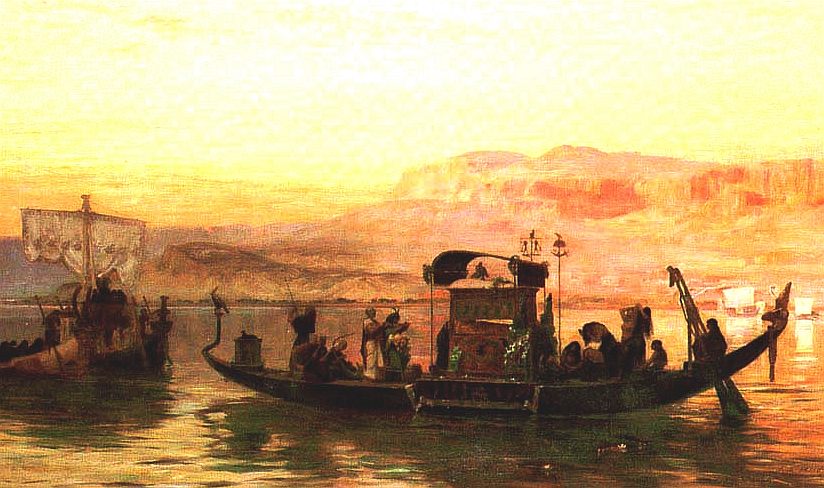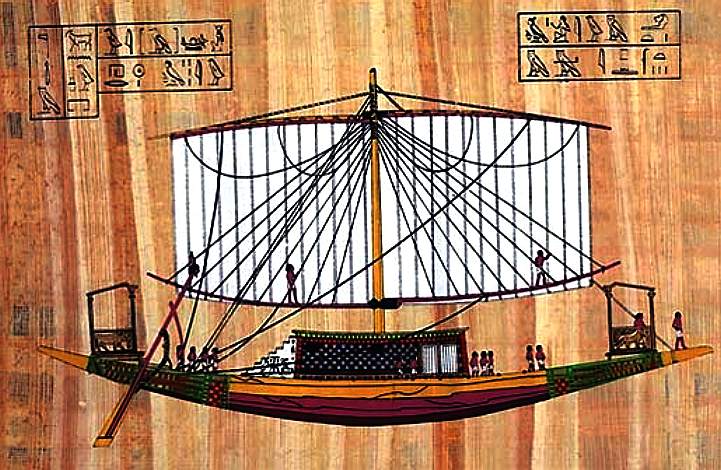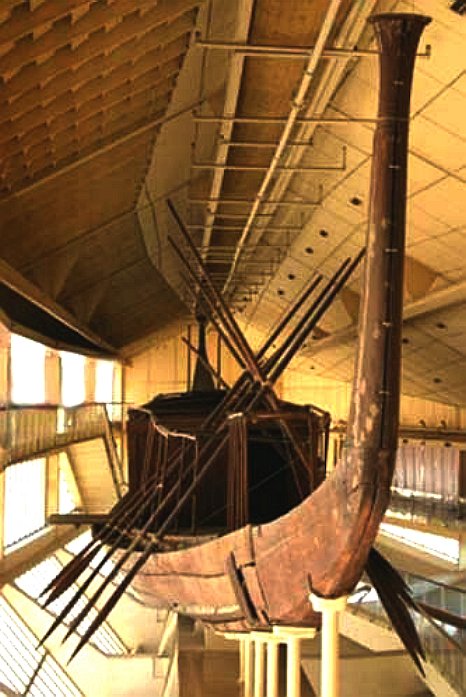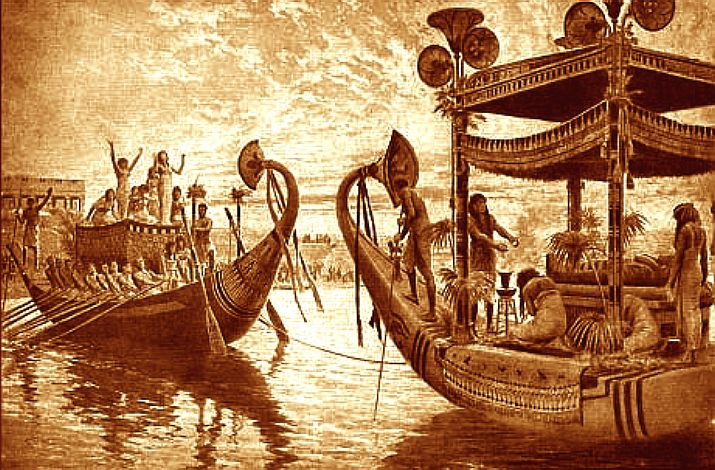|
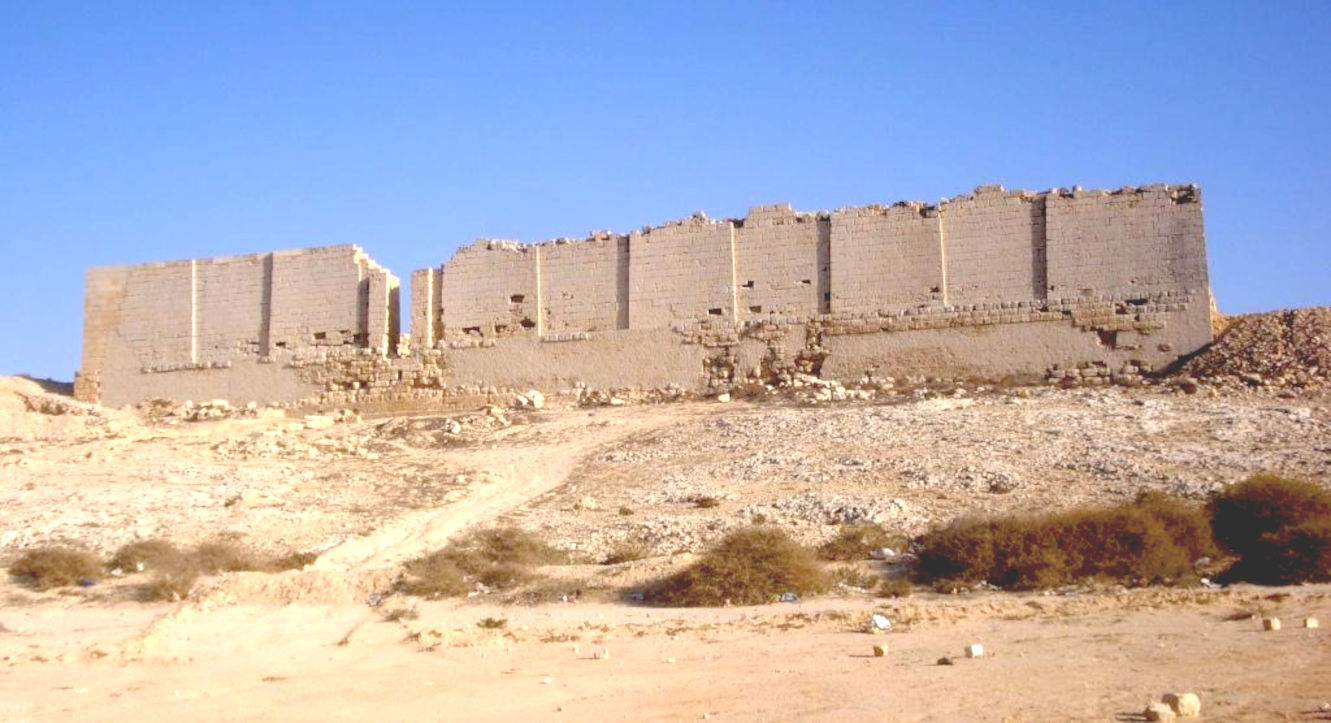
Taposiris Magna is a city established by Pharaoh Ptolemy II Philadelphus between 280 and 270 BCE. The name means "great tomb of Osiris", which Plutarch identifies with an Egyptian temple in the city.
After Alexander the Great conquered Egypt in 332 BC and established his city (called Alexandro and then
Alexandria), the city of Taposiris Magna became a center for religious festival of Khoiak. In 1798 after Napoleon landed in Egypt, he conducted a survey of the architecture of the city of Alexandria and Taposiris Magna.
After the Ottoman Empire conquered the city in 1801, Governor Mohammed Ali of the Khedivate of Egypt decided to rebuild the modern city of Alexandria atop the ruins of the old city. In the twentieth century, excavations of the site were started under the Italian imperial governor, Evaristo Breccia. Calisthenis states that Alexander the Great visited the city on his way to Siwa Oasis, which gives credence to the theory that there must have been a town here in the Hellenistic period.
RECENT EXCAVATIONS
Various archaeologists have been working on the site from 1998. In 2010 archaeologists discovered a huge headless granite statue of a Ptolemaic king, and the original gate to a temple dedicated to the
god
Osiris. According to Dr Zahi Hawass the monumental sculpture, which is a traditional figure of an ancient Egyptian pharaoh wearing collar and kilt, could represent Ptolemy IV, the pharaoh who constructed the
Taposiris Magna temple. The team also found limestone foundation stones which would once have lined the entrance to the temple. One of these bears traces indicating that the entrance was lined with a series of Sphinx statues similar to those of the pharaonic era.
Behind the temple, a necropolis was discovered, containing many Greco-Roman style mummies. Early investigations, said Dr Hawass, show that the mummies were buried with their faces turned towards the temple, which means it is likely the temple contained the burial of a significant royal personality, possibly
Cleopatra VII.
The expedition, started in 2002 as a self-funded expedition led by Dominican lawyer
Kathleen
Martinez, has found 27 tombs, 20 of which are shaped like vaulted sarcophagi, partly underground and partly aboveground. The remaining 7 consist of staircases leading to simple burial chambers. Inside these tombs, the team has found a total of 10 mummies, 2 of them gilded. The discovery of this cemetery indicates that an important person, likely of royal status, could be buried inside the temple. The style of the newly discovered tombs indicates that they were constructed during the Greco-Roman period. Martinez states that the expedition has excavated a temple at Taposiris Magna dedicated to the goddess
Isis, and discovered coins depicting the face of Alexander the Great. They have found a number of deep shafts inside the temple, three of which seem to have been used for burials. It is possible that these shafts were the tombs of important people, and the team’s leaders believe that
Cleopatra and Mark Antony could have been buried in a deep shaft similar to those already discovered inside the temple.
Martinez said that the expedition has so far found a beautiful head of Cleopatra, along with 22 coins bearing her image. The statue and coins show her as a beauty, contradicting the idea recently suggested by an English museum curator that the queen was quite ugly. The finds from Taposiris reflect a charm that could have captured the hearts of
Julius Caesar and Mark Antony, and indicate that Cleopatra was in no way unattractive. Moreover, the features of the sculpted head show no sign of African ancestry, contradicting a recently advanced theory. The team has also found many amulets, along with a beautiful headless statue dating to the Ptolemaic Period. Among the most interesting finds is a unique mask depicting a man with a cleft chin. The face bears some similarity to known portraits of
Mark Antony himself.
A radar survey of the temple of Taposiris Magna, west of Alexandria, Egypt, was completed the previous month as part of the search for the tomb of Cleopatra and Mark Antony. The Supreme Council of Antiquities (SCA) expedition excavating the temple and its surrounding area was headed by Zahi Hawass, at the time, Secretary General of the SCA, and Kathleen Martinez, a scholar from the Dominican Republic.
In 2012, it was discovered that the ruins had also been affected by the Second
Battle of El Alamein. The team had found several unexploded bombs as well as charred remains of Italian and New Zealand soldiers within its tunnels. As of 2013, the excavation had been halted, but Martinez was later given permission to continue her work on the site.
In a 2015 television documentary called "Cleopatra's Lost
Tomb" (shown October, Channel 4 in the UK), Martinez said that she was sure that they were close to finding the tomb there, possibly in a corner of the site where two likely tombs deep underground had been discovered. It was hoped that work to investigate the likely tombs would commence when the official digging season opened in 2016.
On 21 June 2020, Science Channel released a two-hour documentary titled "Cleopatra: Sex, Lies, and Secrets" to reveal recent discoveries.
In January 2021, Egyptian-Dominican researchers led by Kathleen Martinez have announced the discovery of 2,000-year-old ancient tombs with golden tongues dating to the Greek and Roman periods. The team also unearthed gold leaf amulets in the form of tongues placed for speaking with God
Osiris in the afterlife. The mummies were depicted in different forms: one of them was wearing a crown, decorated with horns, and the
cobra snake at the forehead and the other was depicted with gilded decorations representing the wide necklace.
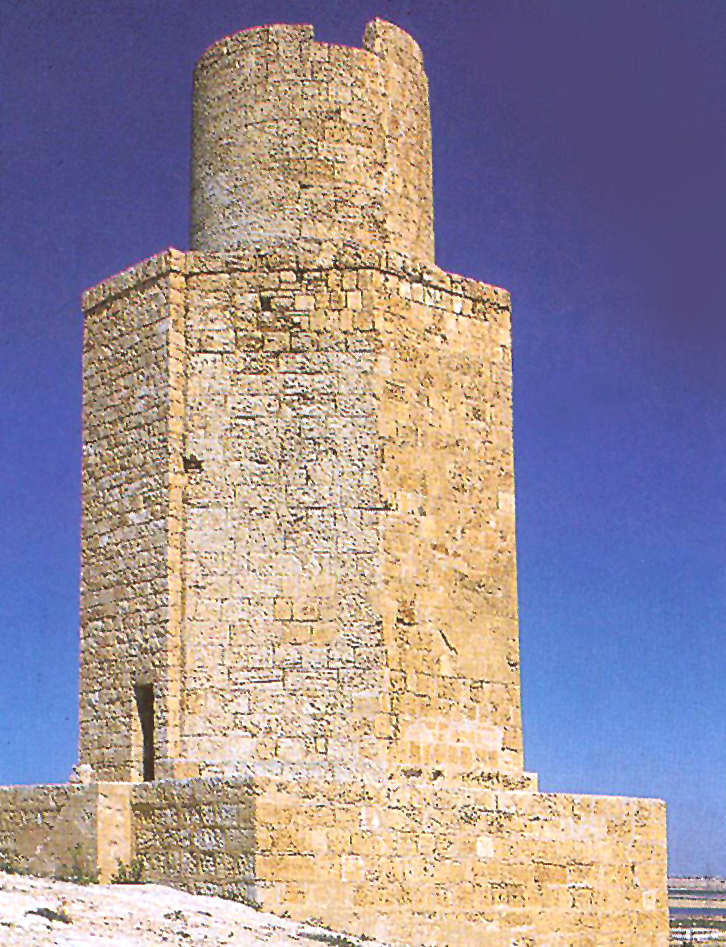
LIGHTHOUSE
Atop the Taenia ridge, an outcropping of limestone which separates the sea from Lake Maerotis, stand two monuments that were partly restored in the 1930s. One is a tower that has been used in the reconstruction of the lighthouse of Alexandria and the other is the remains of a temple of Osiris that is also believed to be the last resting place of Cleopatra.
In the most scholarly study of the tower yet conducted, it was concluded that "The Tower of Abusir" was definitely not a lighthouse or even a watchtower. It was probably constructed during the Ptolemaic reign after the Pharos was built and was only a funerary monument.
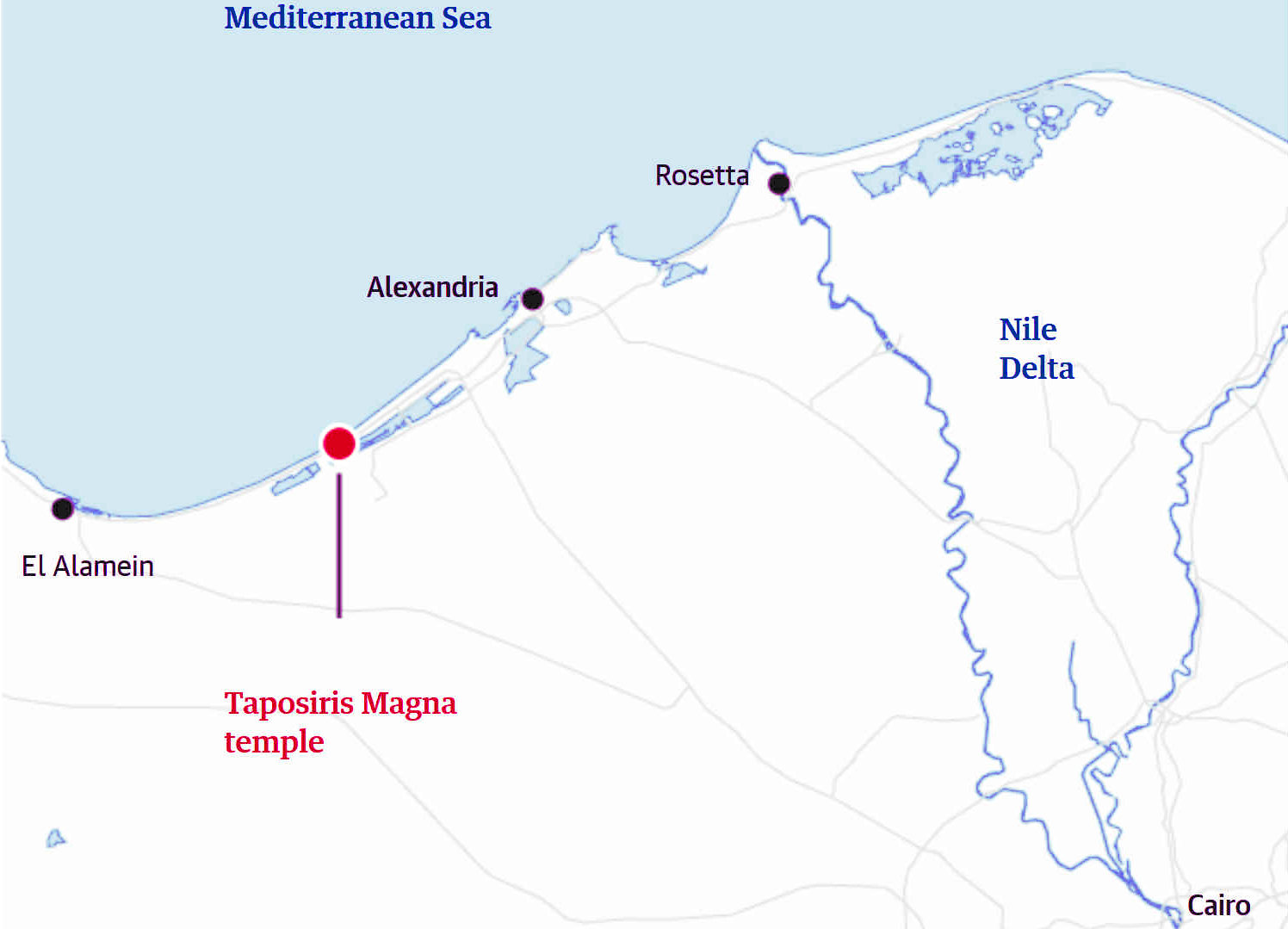
2019
ARCHAEOLOGICAL EXCAVATIONS - KATHLEEN MARTINEZ &
ZAHI HAWASS
EGYPT - archaeologist Kathleen Martinez made a phenomenal discovery in the hunt for Queen Cleopatra after finding two mummies of high-ranking officials in. The search for Cleopatra however continues.
Kathleen Martinez, is the Dominican head archaeologist that led the team that handled the excavations on site for over fourteen years.
According to media reports archeologists from the University of Santo Domingo in the Dominican Republic have discovered 16 new burial shafts inside the old Taposiris Magna Temple a historical landmark in Egypt.
The temple at Taposiris Magna that contained a mummy found
in 2019 was dedicated to
Osiris the ancient Egyptian Lord of the Underworld who was worshipped by Greek leaders in Egypt who honored the old traditions.
The lover of Julius Caesar,
then Marc Antony,
found herself on the losing end of a war; Cleopatra killed herself in 30 BC.
12 OCTOBER 2020
Two priests were discovered in the temple of Taposiris
Magna, west of Alexandria which led people to believe that this is the ancient resting place of Cleopatra herself.
This discovery was made around 2019 when Zahi Hawass released a public statement in which he claimed that he may have uncovered Cleopatra’s tomb in the temple of Taposiris Magna, around 45 kilometers away from Alexandria.
However, this may have been mistranslated, as new studies confirm the fact that the Last Egyptian
Queen's tomb is thought to be somewhere underwater in the Mediterranean.
After the two mummies were discovered in Taposiris Magna, more people are starting to believe that Cleopatra’s remains might be somewhere inside of that temple.
|
|
The
ocean has swallowed umpteen civilizations, just the past 10,000
years. We may never discover other lost towns and cities, such
as to understand our past, or even explore those we know of,
unless the secrets of the ocean are shared.
Ocean awareness,
or literacy is not presently high on
academic agendas. It is a shocking statistic that we know
more about Outer Space, than we do our underwater kingdom.
Televised documentary programmes have done a great deal to
make life under the waves more popular, highlighting the
marine litter problem that is of major concern to marine
biologists. With plastic now seen in the remotest corners of
the globe and deepest trenches of the ocean.
|



